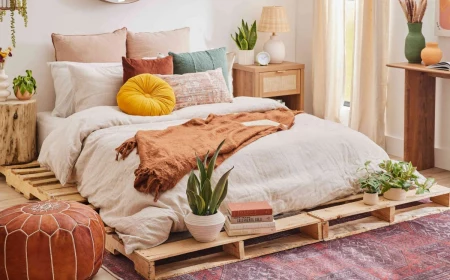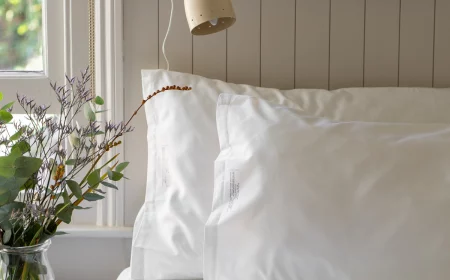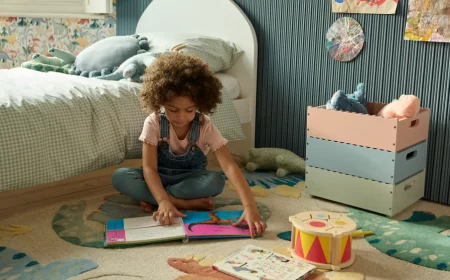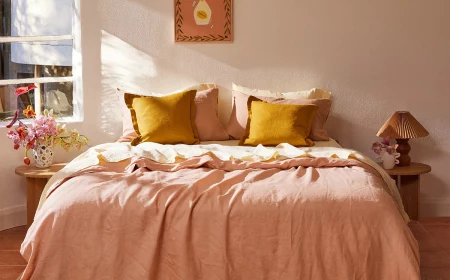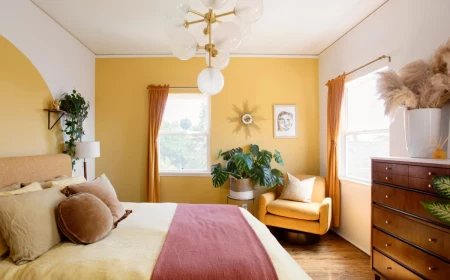Your Nightstand Is Stressing You Out. Here’s the 30-Minute Fix.
Let’s be honest for a second. Your nightstand is probably a hot mess. Over the years I’ve helped folks get their homes in order, and this little table is almost always the last frontier of clutter. It’s the magnet for half-empty water glasses, a wobbly tower of books you swear you’ll read, tangled chargers, and that one random bill you looked at three weeks ago.
In this article
This small surface, the one that’s supposed to be there for you when you’re most relaxed, easily becomes a source of visual noise. But we can fix that. And no, this isn’t about making it look like a sterile magazine photo. This is about making it work for you.
Your nightstand should be a quiet, efficient little command center for your evenings and mornings. It should have exactly what you need, right where you can find it, without a frantic search in the dark. So let’s dive into some simple, practical methods that I’ve seen work time and time again.
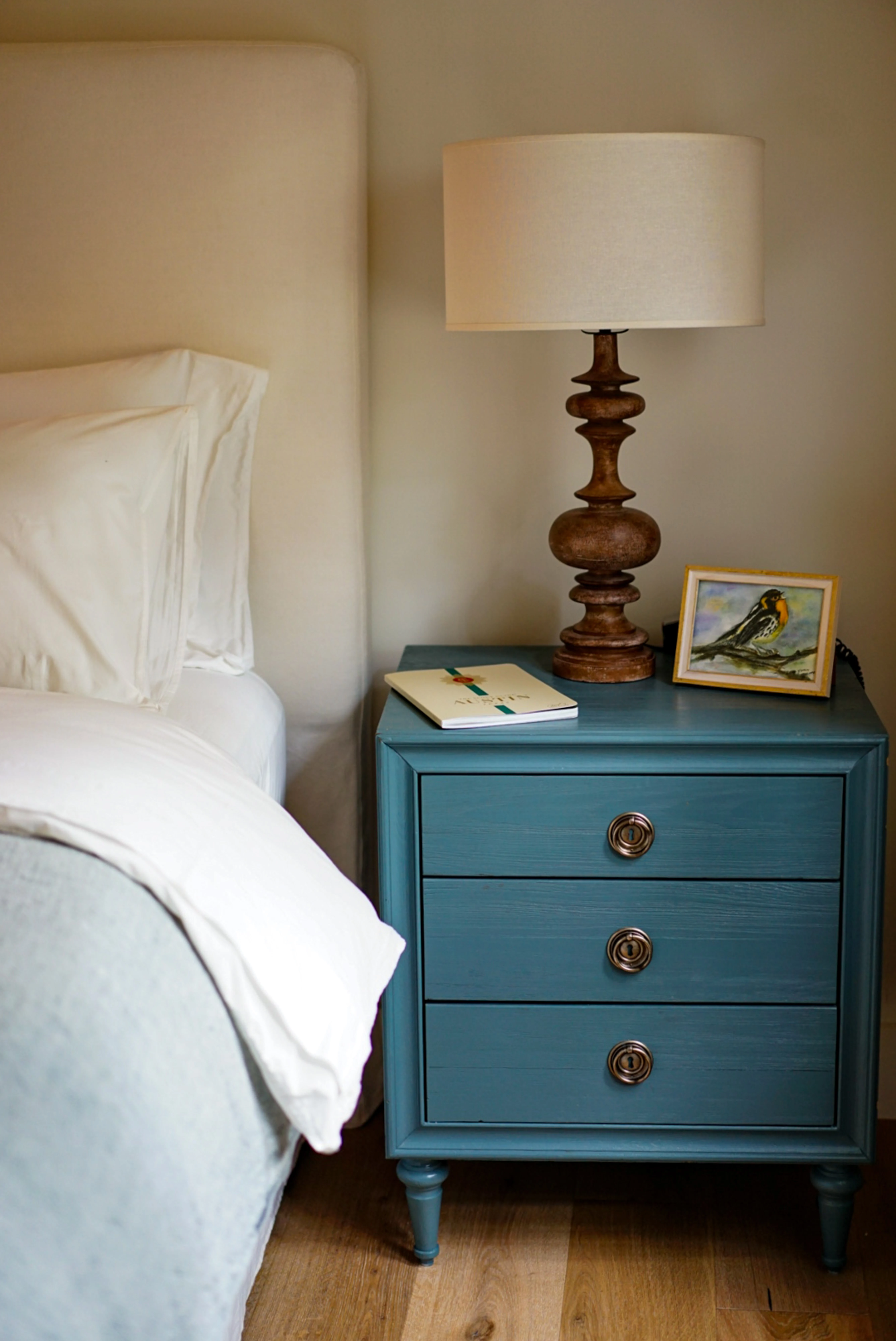
First Things First: Does Your Nightstand Even Fit?
Before you move a single thing, let’s talk ergonomics. The whole point of a nightstand is to have essentials within easy reach while you’re lying down. Reaching too high, too low, or too far isn’t just annoying—it can actually cause muscle strain over time. It’s also how you end up knocking over a full glass of water at 2 a.m.
Here’s a simple pro tip: The top of your nightstand should be about level with the top of your mattress, or maybe just a couple of inches lower. If it’s too high, you’re going to be swatting at your alarm clock. Too low, and you have to do that awkward shoulder-crunch thing to grab your phone. I once worked with a guy who couldn’t figure out why his shoulder was always bugging him. Turns out, his new mattress was a full eight inches taller than his old nightstand. Swapping it out for a taller one made a huge difference. So, check that first. It’s the foundation for everything.
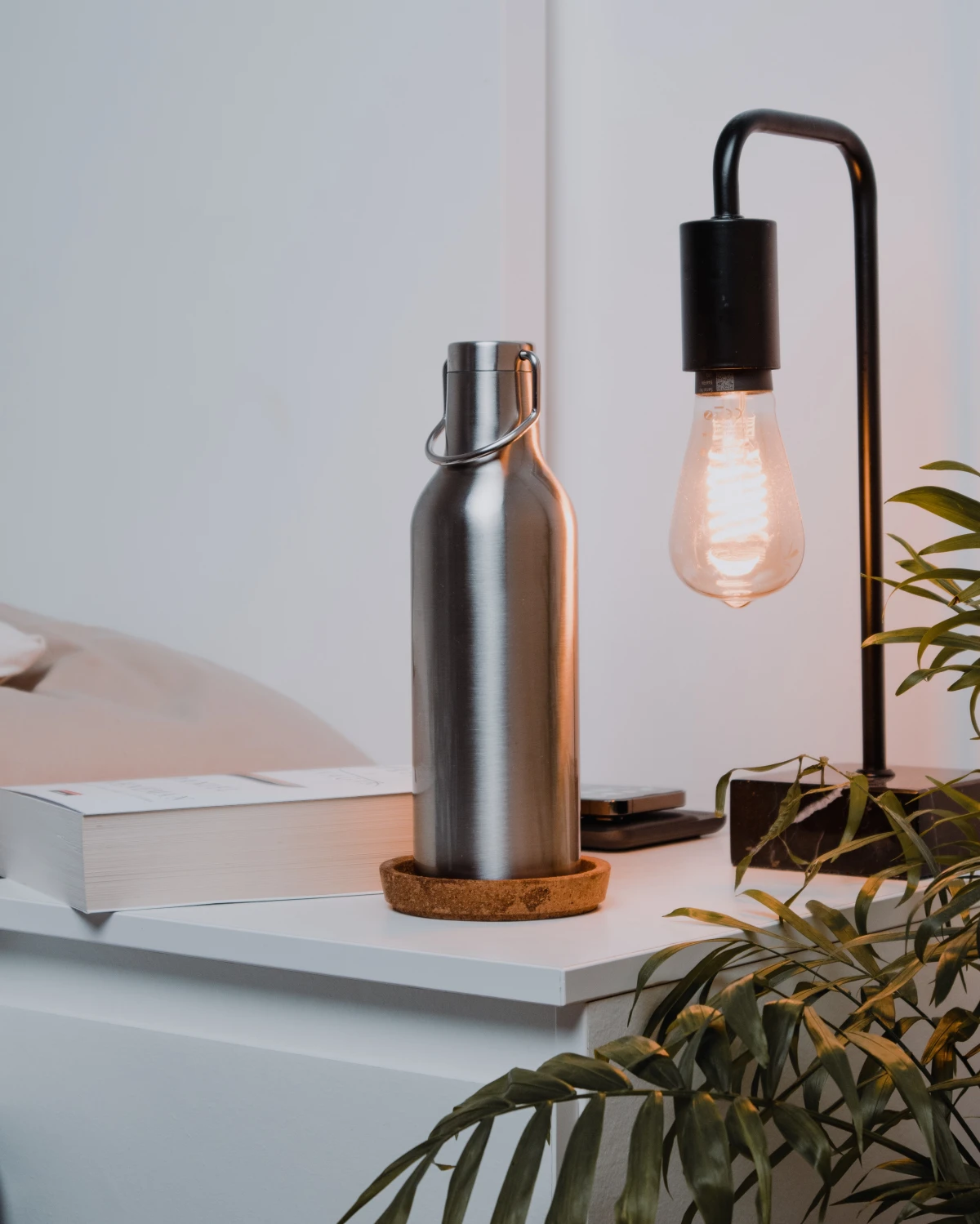
And by the way, a cluttered nightstand is more than just ugly. It’s the last thing you see before you sleep and the first thing you see when you wake up. That visual chaos can genuinely spike your stress levels, making it harder to unwind. A clean surface is a clean slate for your mind.
The 30-Minute Reset: Let’s Declutter This Thing
You can’t organize clutter. You have to get rid of it. So, set aside 30 to 60 minutes, put on some music, and let’s do a proper reset. First, lay a blanket on your bed or the floor to create a sorting zone.
Step 1: The Total Clear-Out
Empty it. All of it. Take everything off the top and out of every single drawer. Don’t just shuffle things around. You need to see the nightstand as a blank slate. Put every single item on that blanket. You’ll probably be shocked at what you find—I’ve seen everything from expired cough drops to pens that ran out of ink ages ago.
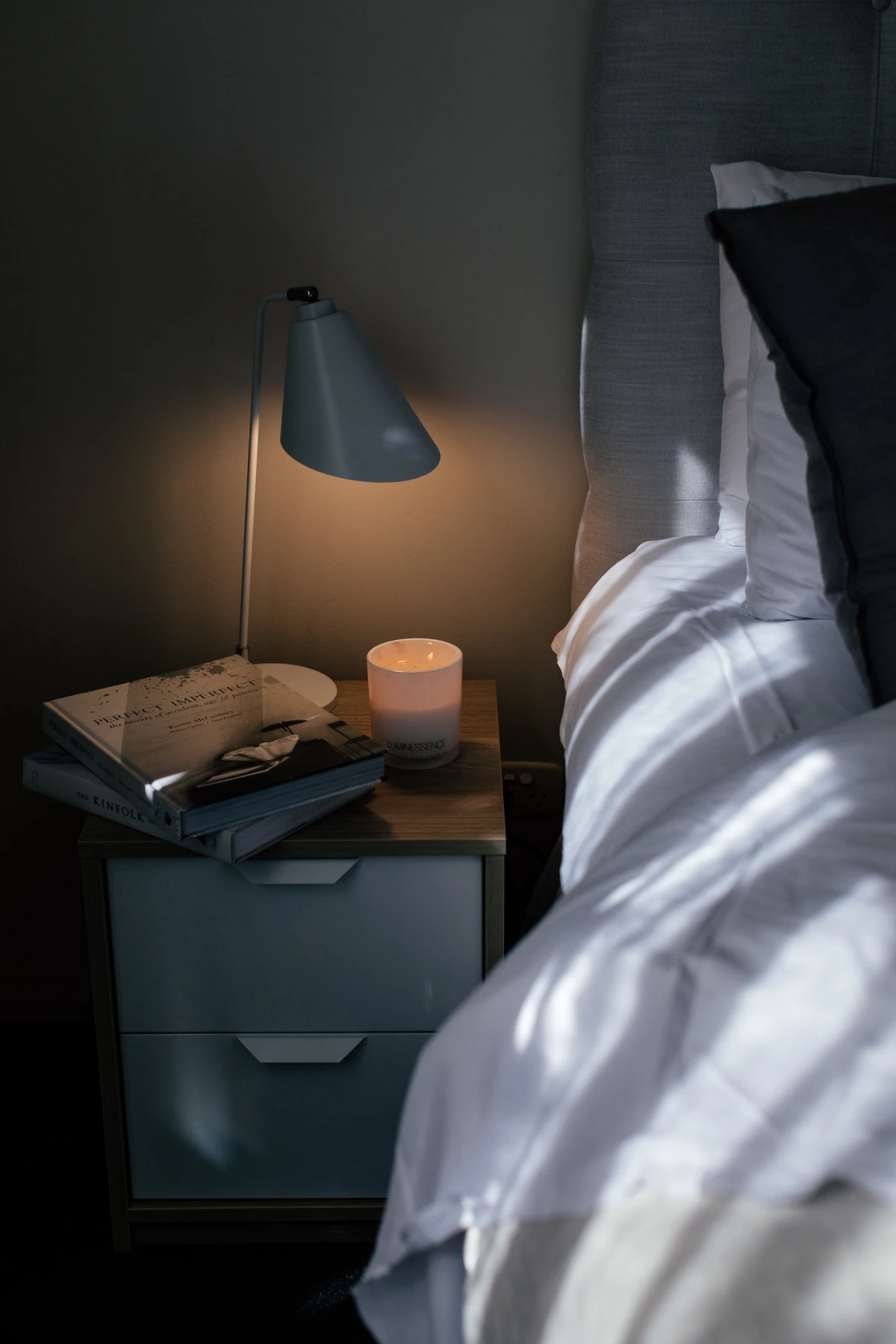
Step 2: A Seriously Good Cleaning
Now that it’s empty, give it a deep clean. Dust gets everywhere, and sticky rings from glasses are a given. For a wood nightstand, use a gentle wood cleaner and follow up with a bit of polish; it makes the whole thing feel brand new. If it’s laminate or MDF, a simple all-purpose cleaner on a damp cloth is perfect, but be sure to dry it well so the edges don’t peel. For glass or metal, a standard glass cleaner or a damp cloth will do the trick. Don’t forget to use a cotton swab to get into the corners and around the drawer pulls!
Step 3: The Sorting Phase
Okay, look at that pile on the blanket. It’s time to make some decisions. Be ruthless here.
- Trash/Recycle: Obvious junk. Old receipts, dried-out pens, broken chargers. A common mistake is keeping broken things to “fix later.” If it’s been broken for more than a few months, it’s just trash. Let it go.
- Relocate: This is for everything that doesn’t belong by your bed. That stack of novels goes to a bookshelf. Bills go to your desk. The twenty hair ties you found go to the bathroom. Use a box for this. And I know what you might be thinking: “But the rest of my house is a mess, too!” Don’t panic. The goal right now is just to get it away from your sleep space. Find a better home for it, even if that home isn’t perfect yet.
- Nightstand Keepers: These are the essentials you genuinely use daily or weekly from this spot. Set this pile aside.
- Backup Items: This is a small but useful pile. It might be a spare pair of reading glasses or a travel-size lotion. These can go in a lower, less-used drawer.
Once you’re done sorting, take out the trash and deal with the “Relocate” box immediately. Putting it off just means you’ve moved your clutter pile, not eliminated it.

Choosing Your Essentials (Less is ALWAYS More)
Look at your “Nightstand Keepers” pile. Ask yourself: “Did I use this in the last week?” If not, it probably doesn’t need to be within arm’s reach of your bed.
Think of your nightstand in zones:
- The Top Surface: This is for immediate-use items and should be mostly clear. Think a lamp, your alarm, and maybe a small tray. Keep it to 3-5 things, max. The vibe should go from a wobbly pile of books and tangled cords to one book lying flat, a phone on a stand, and a coaster waiting for your water glass. Ah, bliss.
- The Top Drawer: This is for daily stuff you want out of sight. Hand cream, lip balm, charging cables, reading glasses.
- Lower Drawers or Shelves: For weekly-use items like your current book, a journal, or those backup items.
\p>Heads up! If your nightstand doesn’t have drawers and is just an open table, those lower shelves are your best friend. This is where decorative boxes or woven baskets become essential. You can find nice ones for $15-$25 at Target or HomeGoods. They keep things tidy while still looking intentional.
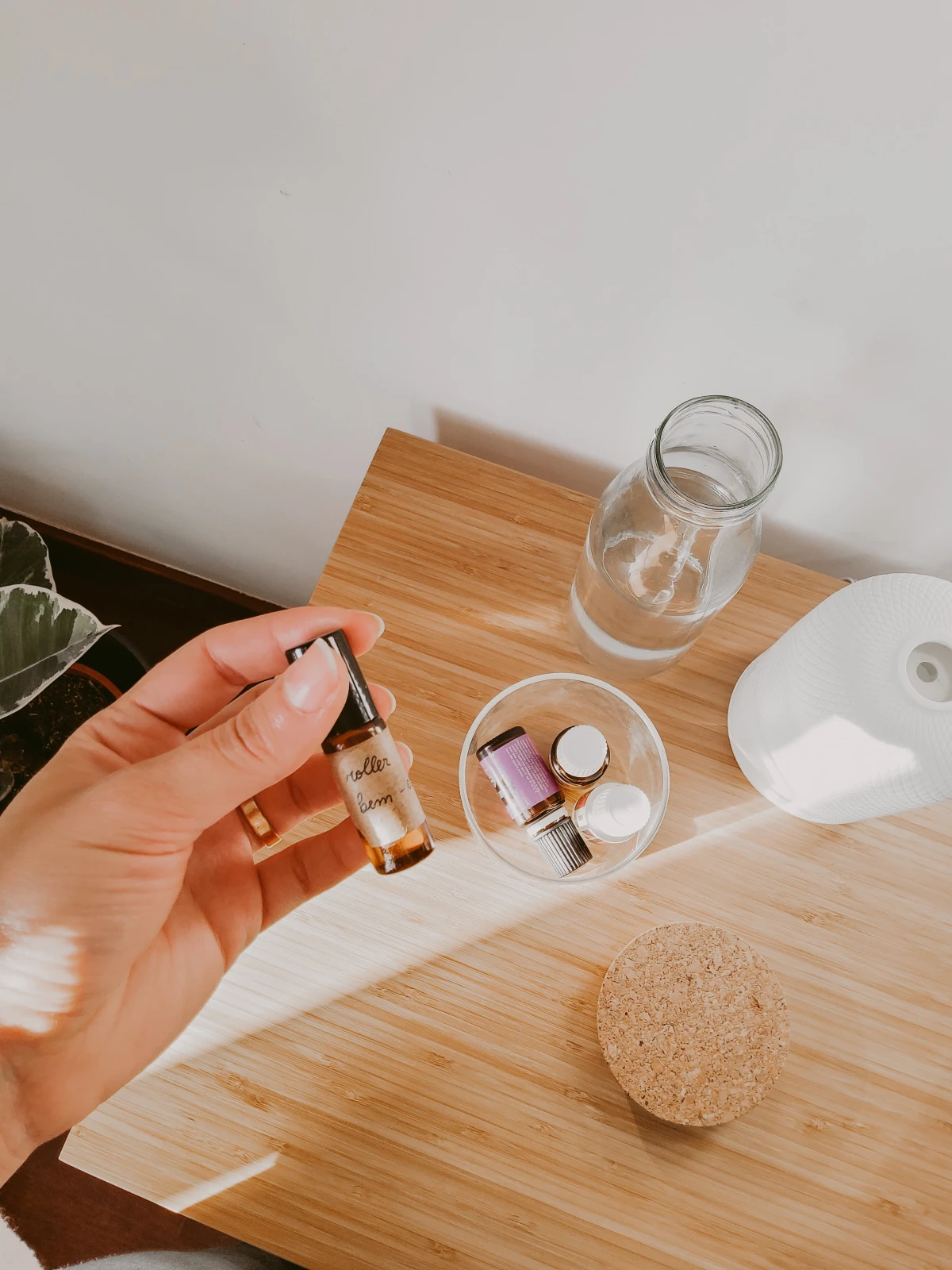
The Best Tools to Keep It Organized
Okay, now for the fun part. A few small purchases can make a world of difference in keeping your nightstand from becoming a junk drawer again.
Drawer Dividers: The Unsung Heroes
A drawer without dividers is a black hole. Dividers create little homes for everything, so you can see it all at a glance. Before you buy, please measure the inside of your drawer (width, depth, and height). You have two great options here:
- Bamboo Dividers: These look incredibly high-end and warm. Most are expandable and spring-loaded, so they give you a nice, custom fit. On the downside, they can be a bit bulky, taking up precious space. You can find them for around $20-$35 at places like The Container Store or on Amazon.
- Clear Acrylic Trays: These are fantastic because they’re modular. You can buy a set of different-sized clear boxes and arrange them like a puzzle to perfectly fit your stuff. They’re super easy to wipe clean, but to be frank, they can show scratches over time. A good starter set is usually in the $15-$25 range.
Trays and Dishes: Your Landing Strip

A small decorative tray on top of your nightstand is a game-changer. It creates a visual boundary—a “landing strip” for your watch, rings, or earrings. It contains the clutter and makes cleaning a breeze; you just lift the one tray instead of ten tiny things. You can grab a nice ceramic or wood one for $10-$20.
Quick tip: Don’t have a tray? A pretty mug or small bowl you already own works perfectly for holding pens, glasses, and other small items.
Cable Management: Taming the Tech Monster
Tangled cords are the worst. Luckily, the fix is cheap. Grab a pack of adhesive cable clips for under $10 online. You just stick one to the back or side of your nightstand, and it’ll hold your charging cable so you’re not fumbling for it on the floor every night.
Lesser-known trick: In a pinch, a simple binder clip works perfectly. Just clip it to the back edge of your nightstand and thread your cable through the metal loops. It’s a classic organizer’s hack for a reason.
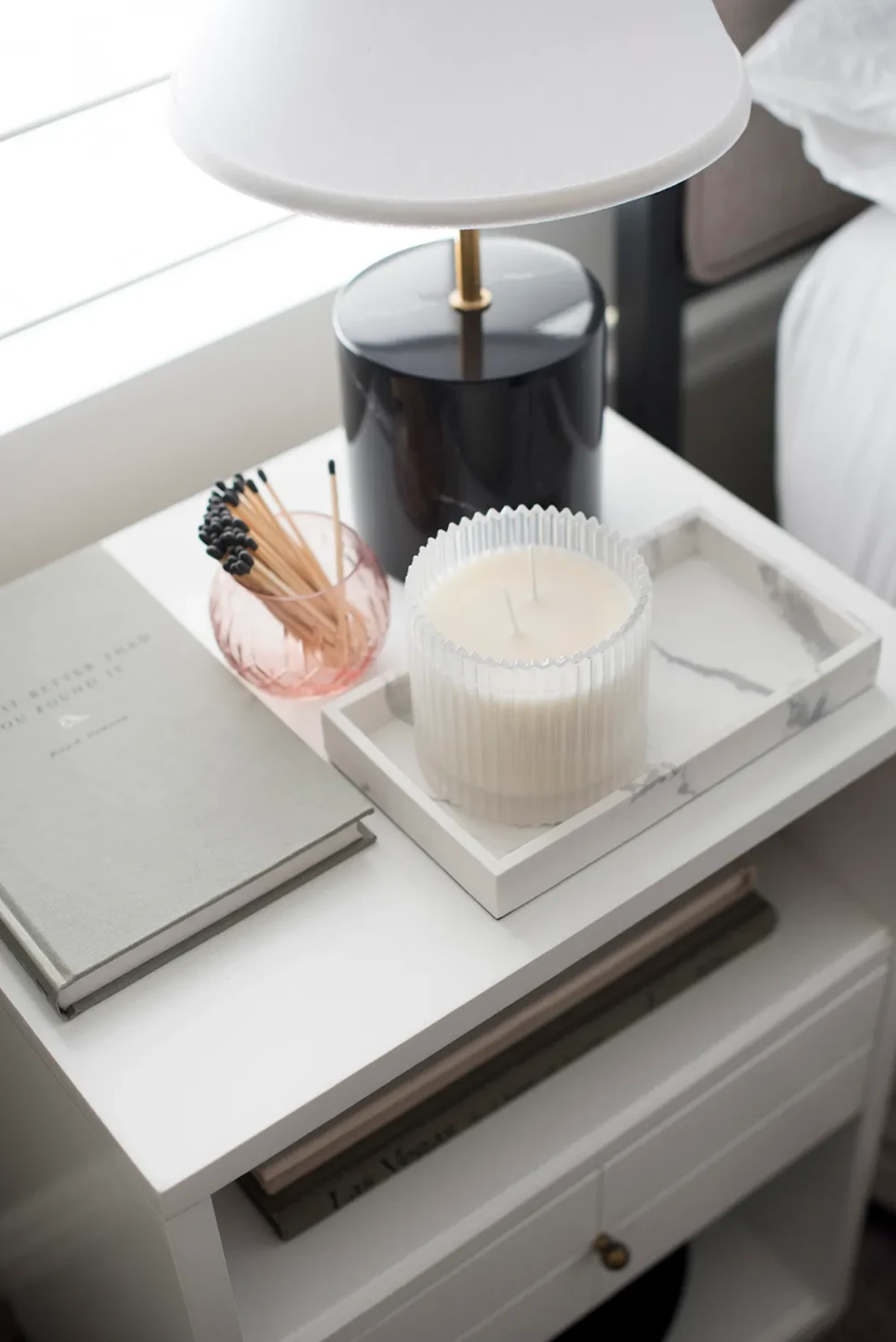
A Few Final, Crucial Thoughts
Safety first, always. If you have small children, you MUST anchor your nightstand to the wall. It’s a simple, inexpensive step that prevents dangerous furniture tipping. Also, keep all medications in a locked box or a childproofed drawer—safety trumps convenience every time. And please, never charge your phone under your pillow. It’s a serious fire hazard. I’ve seen scorch marks on sheets from this exact thing.
The 5-Minute Maintenance Plan
An organized space won’t stay that way by itself. The secret is tiny, consistent habits.
- The 1-Minute Evening Reset: Before bed, take 60 seconds to put your lotion back, place your glass on its coaster, and plug in your phone.
- The 5-Minute Weekly Tidy: Once a week, wipe down the surface and put away anything that’s migrated there.
Ultimately, organizing your nightstand is a small act of self-care that pays off big time. It sets the stage for better sleep and a calmer morning.
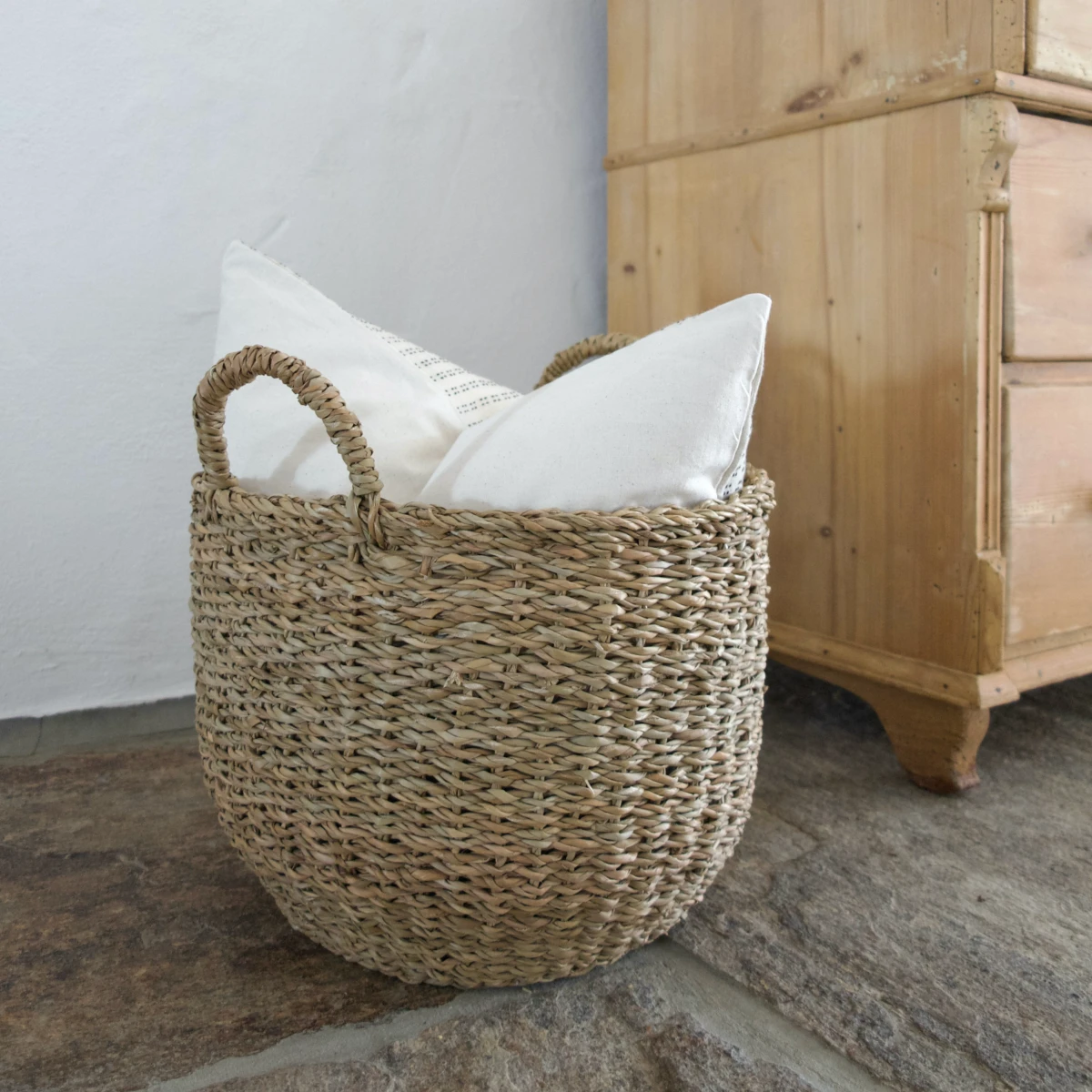
So here’s a challenge for you. Right now, as you’re reading this, find ONE thing on your nightstand that doesn’t belong there and move it. Just one thing. Go on, I’ll wait.
See? Feels better already.
Inspiration:
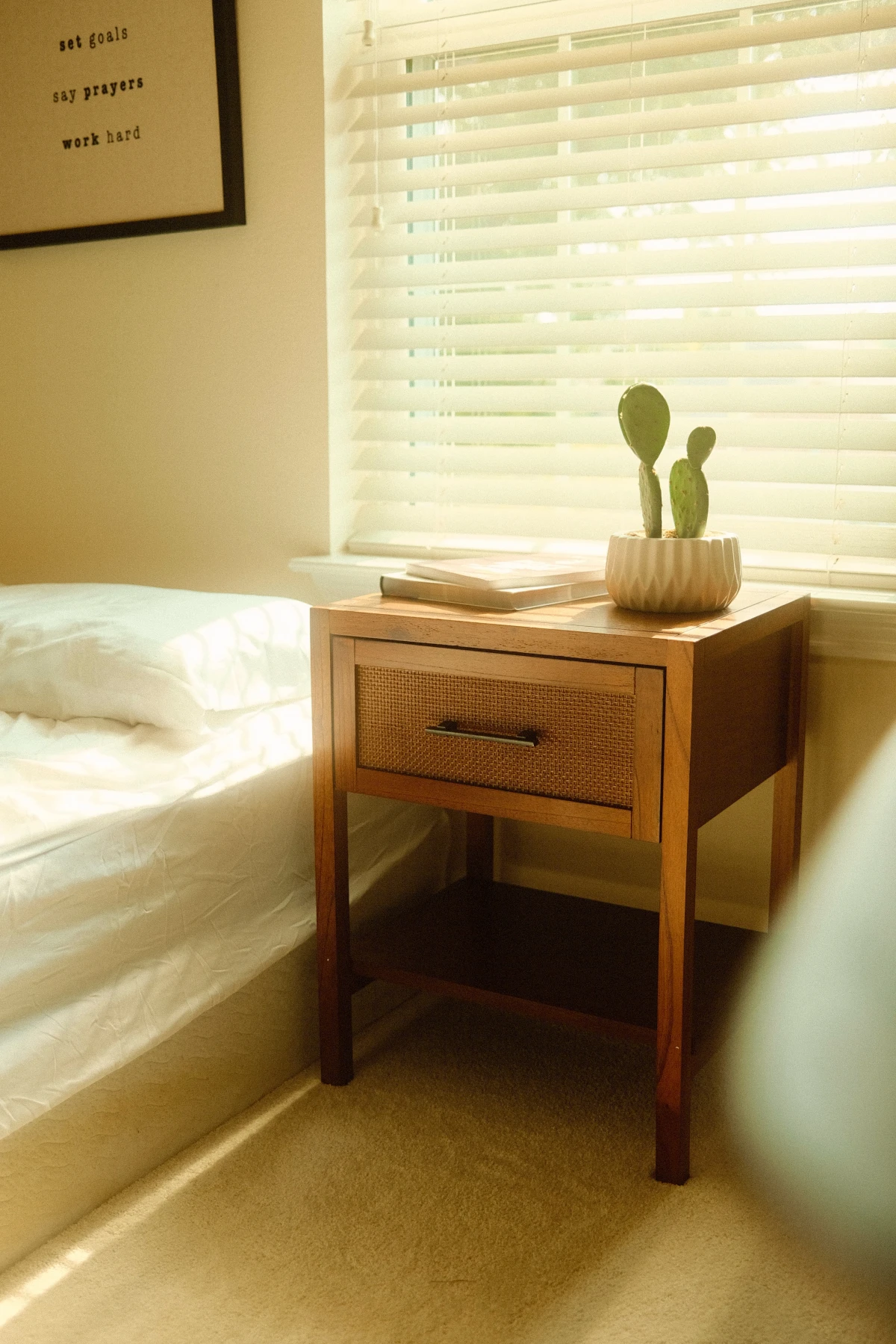
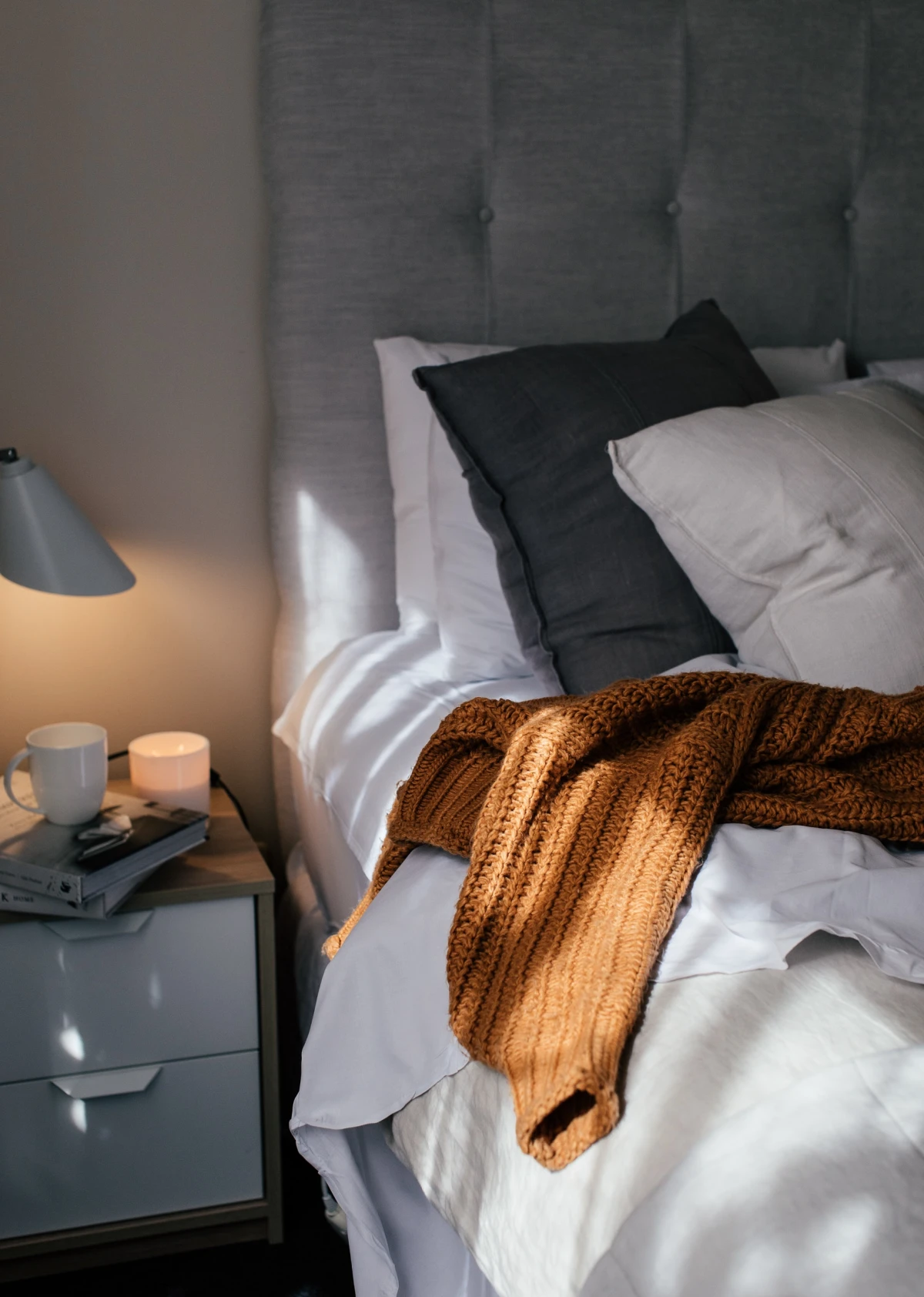
Once you’ve cleared the decks, the key is a ruthless edit. Your nightstand isn’t storage; it’s an active launchpad for sleep and waking. Only the absolute essentials should earn their place back.
- A containment vessel: A small ceramic dish or a leather valet tray, like those from Courant, corrals the tiny things—lip balm, rings, earbuds—preventing them from becoming visual static.
- Your *current* read: Just one book. Not the five you aspire to read. This single-tasking focus is calming.
- Hydration station: A stylish water carafe with a built-in cup, such as those from Ferm Living, looks intentional and eliminates the graveyard of half-empty glasses.
- Managed power: Use a simple adhesive cable clip on the back of the nightstand to keep your phone charger tidy and within reach, not in a tangled mess on the floor.
Nearly 70% of adults report that they experience daily stress and anxiety. Creating a sensory sanctuary can be a powerful antidote.
Your nightstand is the perfect place to engage your sense of smell to signal relaxation. A high-quality scented candle offers a beautiful ritual and a warm glow, but must be extinguished before sleep. For a safer, all-night solution, consider an ultrasonic diffuser. Models like the Vitruvi Stone Diffuser can run for hours, gently misting the air with calming essential oils like lavender or chamomile, which studies have shown can lower heart rate and promote deeper sleep.


